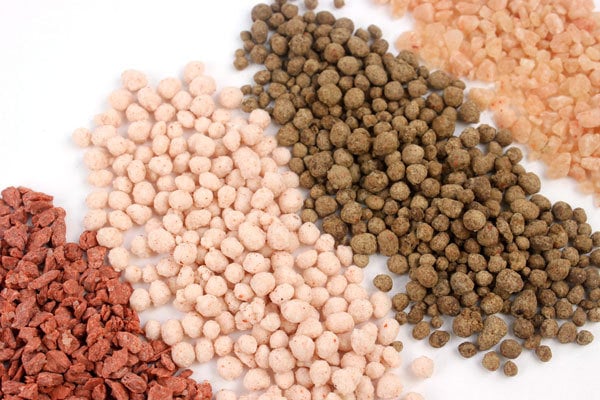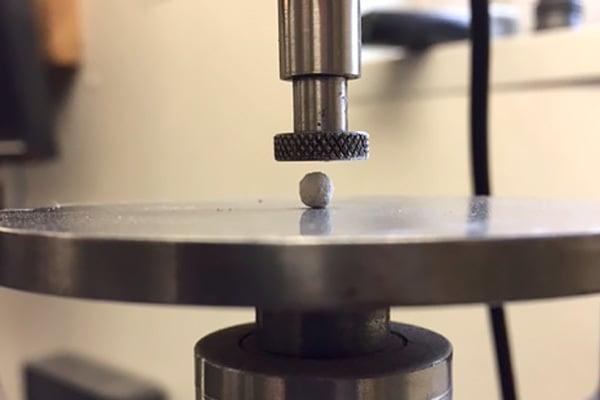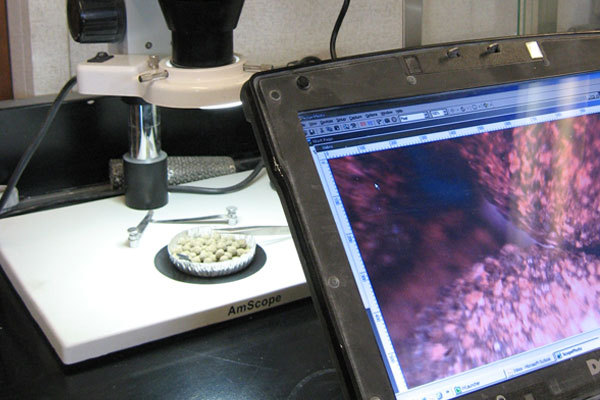Agglomeration, or particle size enlargement, offers those who process bulk solids an array of benefits ranging from minimized fugitive dust, to improved flowability, and so much more. One of the greatest advantages offered by agglomeration, however, and a key reason for its widespread adoption throughout many industries, is that it allows producers to control various particle characteristics, from basic physical specifications to higher-level advanced qualities.
The ability to control particle characteristics opens up a world of opportunity in tailoring products for a given market or application. This has become increasingly important as consumers and producers alike have become more discerning than ever, and advancements in technology have allowed producers to zero-in on increasingly specific parameters.
Outlined here are some of the most commonly targeted particle characteristics producers seek to manipulate when they choose to agglomerate powder into a granular product.
Basic Particle Characteristics
Particle characteristics have an influence on everything from how a material handles, to the way it performs in downstream equipment, and even its marketability as a consumer product. In fact, one would be hard-pressed to illustrate the depth to which each characteristic influences the end product, the production process, and other characteristics.
The importance of each parameter is highly subjective, varying considerably across different industries, materials, and applications. But such is the advantage of agglomeration; producers are able to select and optimize production to reach the characteristic or combination of characteristics important to them.
These characteristics may include reaching a target value for one or many of the following, in any combination.
Particle Size
Particle size is often the first particle characteristic producers target, as it has a significant influence on other characteristics, as well as almost every conceivable aspect of the end product.
Producers may require a specific particle size for any number of reasons – processing requirements dictated by downstream equipment, consumer market demands, or simply optimal performance of the material as an intermediary product.
Particle size also has an impact on the material’s bulk density and mechanical strength, surface-area-to-volume ratio, as well its flowability and dosing/metering behavior.
Further, it has a significant influence on the extent to which a material made up of different components will segregate into a non-homogeneous mixture.
Depending on the industry, particle size may be targeted in different ways. The fertilizer industry, for example, relies on reaching a specific “size guide number,” or SGN – the average of all particle sizes present. Other industries rely on particle size distribution, or PSD (the amount of material in each size range of a given sample.)
Particle Shape
Another common reason for agglomerating a powdered material is the desire to achieve a certain particle shape. Again, this may be to meet consumer demands, promote optimal processing, or otherwise.
Particle shape also has a special influence on a material’s flowability; round particles exhibit a much greater flowability because of the lack of surface contact between granules. In contrast, jagged irregular granules are much less flowable due to the high amount of surface area contact between granules.

Various potash agglomerates produced from powder in the FEECO Innovation Center
Bulk Density
Also sometimes called apparent density or volumetric density, bulk density is another critical target parameter for those working in powder agglomeration. Reaching a target bulk density is important for several potential reasons.
As a measure of the weight of a material by volume, a material’s bulk density has ramifications on the amount of space a material occupies. This extends to shipping and transportation, with a higher bulk density allowing producers to ship more product within the same volume of material. Similarly, it also has significant implications on packaging and storage.
In addition to its influence on the quantity of product in a given volume, bulk density is also an important factor in the flowability of a material, as well as its metering or dosing, both during bulk solids processing, as well as in the material’s end use.
For example, in the use of granular fertilizers and soil amendments, bulk density influences how far the product is “thrown” from the spreader; granules with a high bulk density will fly comparably farther than those with a lower bulk density.
In other cases, it may be desirable to target a low bulk density in order to foster more void spaces within particles, which increases surface area and can also help them to dissolve more quickly.
As with particle size, bulk density also influences the extent to which disparate materials will segregate when combined.
Product Formulation/Chemical Composition
While product formulation can be controlled through a variety of means, the agglomeration of powder presents a unique opportunity to include all of the necessary components within a single granule, so each and every granule provides a complete formulation of the product.
In the fertilizer industry, this is referred to as a complex fertilizer; instead of having disparate granules of each component blended together in a mix prone to segregation, the entire formulation is contained within each and every granule.
Moisture content
Moisture content is a common culprit in flowability, storage, and quality issues, so targeting a specific moisture content is a common focus of agglomeration process operators.
Moisture content can influence the overall stability of a product, potentially promoting mold growth (in the event of too much moisture) or causing material to break down prematurely (in the case of too little moisture).
While moisture content isn’t necessarily a result of particle formation, per se, though moisture levels are tightly controlled during the agglomeration process, it is a result of controlling the particle drying step often required in an agitation agglomeration/wet granulation process.
Green strength
Green strength refers to a particle’s ability to move through the necessary production steps without breaking down, or in other words, its mechanical strength as a wet pellet prior to drying or curing. Adequate green strength allows particles to withstand the necessary drop and transfer points in the process.
Achieving a specific green strength is important to producing a uniform product that meets quality specifications.
Dry Crush Strength
Dry crush strength, or crush strength, refers to the mechanical strength of the finished product in its dry state.
Dry crush strength influences several aspects of the end product, including its ability to hold up during handling, transportation, and storage. Producers are often looking to reach a specific crush strength because the parameter has a significant impact to end product handling and performance; a crush strength that is too low will cause product to break down prematurely (often generating dust), while a crush strength that is too high won’t allow the product to break down as intended.

Crush strength test in the FEECO Innovation Center after powder agglomeration
Surface Quality
Surface quality is another target parameter producers often have in mind. Particle surface quality can range from rough to smooth and everything in between.
Surface quality may be important to producers for optimizing flowability, or as a means of presenting a premium product to the market, enhancing integration as an additive, or any number of other reasons.
Surface quality may be controlled through managing aspects of the agglomeration process, or through an additional particle coating step.

The surface quality of a newly agglomerated sample is examined under a microscope in the FEECO Innovation Center
Surface-Area-to-Volume (SA:V)
Surface-Area-to-Volume (SA:V) is exactly as it sounds: the ratio of surface area compared to the volume. Particles with a high surface-area-to-volume ratio are typically more reactive and capable of delivering active ingredients at a faster rate, exhibiting increased diffusion. This parameter is often used by catalyst, adsorbent, and fertilizer manufacturers.
Advanced Particle Qualities
Through manipulating the aforementioned parameters, producers are able to control and finesse higher-level qualities of granules. This often includes:
Porosity
Porosity, or the amount of void spaces within a particle, is critical to influencing a material’s adsorption, leachability, permeability, and smelting characteristics, among other things.
Porosity is largely influenced by the method of production employed, with granules produced via tumble-growth/agitation agglomeration generally exhibiting a greater porosity.
Applications Where Particle Porosity is Important
Many applications depend on particle porosity to perform as intended. Among the most common include:
- Heap Leaching
- Lightweight Aggregates (LWA) and Expanded Clay Aggregates (LECA)
- Adsorbents
- Soil amendments
- Desiccants
Flowability
Flowability, or how well a material moves through chutes, transfer points, and the like, is of critical concern to most everyone working with bulk solids.
Several factors affect a material’s flowability, including particle shape, surface quality, bulk density, moisture content, and more.
Applications Where Flowability is Important
Because it is so influential on process efficiency and end product performance, almost all processing operations, no matter their goal, are looking for improved flowability, be it for the process or the end product. Flowability is especially important in the many applications that rely on the ability to meter specific quantities of material into the process or a piece of equipment, such as in:
- Specialty Chemical Manufacturing
- Fertilizer and Soil Amendment Production
- Glass Processing
- Animal Feed Production
Leachability
Leachability refers to a material’s ability to allow liquids to percolate through and around the granule.
How leachable a particle is depends largely on particle size, shape, and the amount of void spaces in the material (porosity). It also typically relies on particles that won’t break down easily under pressure (crush strength), as this would cause the adsorbent to be carried away with the target component.
Applications Where Leachability is Important
Leachability is frequently used in the following applications:
- Proppants
- Fillers
- Adsorbents
Solubility
Solubility refers to how well particles will dissolve in liquid. Solubility is primarily a result of the chemical composition of the particles, as well as their size and density.
Applications Where Solubility is Important
Solubility is a common target for:
- Solvents
- Pigments & dyestuffs
- Paint additives
Attrition
Attrition refers to the breakdown of product into fines and dust, or rather, the level of degradation a material will experience during normal handling and use.
Attrition is problematic because it results in lost product, causes dust issues, and lowers product value. The problems associated with attrition and dust generation are such that anyone working with a granular product is typically looking to minimize the potential for attrition.
The potential for attrition to occur is tied to the material’s chemical composition, as well as its dry crush strength and particle shape, with round particles yielding less attrition than jagged irregular ones where edges are prone to breaking off.
Developing a Process to Agglomerate Powder
As each material responds to agglomeration in its own unique way, agglomerating powder to produce a granular product with a specific set of characteristics most often begins with testing in a facility such as the FEECO Innovation Center.
Powder agglomeration process development typically begins with batch-scale testing on a single piece of equipment to assess the initial feasibility of the intended process. If successful, testing may progress all the way to pilot-scale continuous test runs utilizing multiple pieces of equipment.
Throughout development, numerous process, equipment, and material variables are used to control and fine-tune end product characteristics. These variables range from the type of equipment used, to the feed rates, binder formulation, retention time, and so much more.
Conclusion
The ability to agglomerate powder into a cohesive granular product of precise specifications is critical to producing products and materials for today’s niche markets and advanced technologies. By controlling basic parameters such as bulk density, particle size, and more, producers are able to achieve the product qualities their industry depends on, be it porosity, flowability, or otherwise. These carefully engineered agglomeration processes are developed through comprehensive testing to assess material characteristics and fine-tune process variables to produce a product of exacting specifications.
FEECO is the world’s leading tumble-growth (agitation) agglomeration specialist. Our custom agglomeration equipment designed through testing in our facility helps our customers produce the products our world depends on every day. For more information on agglomeration testing or our custom agglomeration equipment, contact us today!



